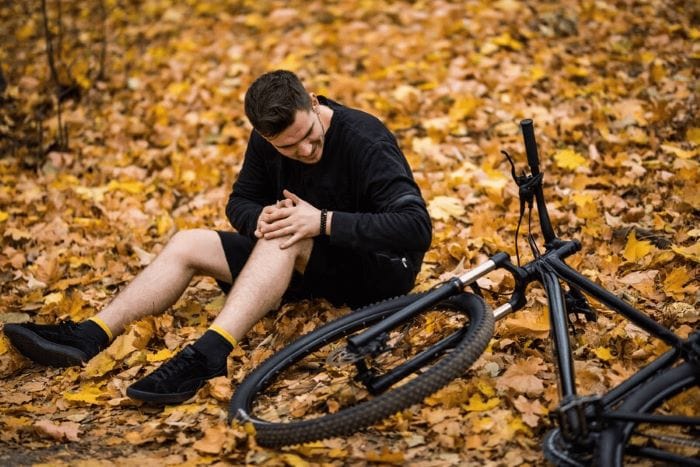
Bicycling should be a peaceful, healthy way to travel, but one moment of negligence can change everything. When a bike crash leaves someone injured or emotionally shaken, it often leads to something much more complicated: a bicycle accident lawsuit. This article dives into what leads to bicycle accident cases and how victims can prove fault, especially in the face of serious injuries, complex traffic laws, and insurance companies trying to minimize claims.
Whether you or a loved one suffered severe injuries or are simply trying to understand your legal options after a bicycle collision, you’ll find clarity here. From determining liability to understanding your legal protections, we’ll guide you step by step. Let’s explore how bicycle accident victims can stand up for their rights and secure fair compensation.
What Commonly Leads to Bicycle Accident Lawsuits?
Bicycle accident lawsuits typically arise when a cyclist suffers injuries due to someone else’s negligence. These accidents often involve motor vehicles, poor road conditions, or disregard for bike lanes and traffic laws. When a bicycle crash causes significant medical expenses or long-term suffering, injured cyclists often file lawsuits to hold the at-fault parties accountable.
Common causes include:
Distracted driving (texting, eating, adjusting controls)
Failure to yield to cyclists at intersections or stop signs
Dooring accidents (when parked drivers open doors without checking)
Speeding or aggressive driving
Driving in or blocking bicycle lanes
The at-fault driver’s negligence directly caused each of these scenarios. In many personal injury cases, accident victims may have grounds for a personal injury claim or even a full bicycle accident lawsuit.
Proving Fault in Bicycle Accident Cases
In any personal injury lawsuit, proving fault is crucial. To prove negligence, you must demonstrate that the other party acted carelessly and that this behavior directly caused the bicycle accident. For bicycle accident claims, gathering strong evidence is essential.
Here’s what you need to build your case:
Accident scene photos showing vehicle positions, damage, road conditions, and the circumstances surrounding the crash.
Police reports documenting how the accident occurred, including any citations
Medical records and medical bills outlining the extent of injuries and treatments
Witness statements from bystanders or other drivers
Expert accident reconstruction if liability is contested
Serious Injuries and Their Legal Implications
Bicycle accident injuries are often severe because cyclists have little protection. These injuries can dramatically impact a person’s life and finances, often resulting in medical expenses and lost wages due to missed work.
Common bicycle accident injuries include:
Head injuries and traumatic brain injuries (TBIs)
Broken bones, especially arms, ribs, or legs
Spinal cord injuries
Road rash and deep lacerations
Emotional distress, including psychological trauma
When a cyclist has suffered severe injuries, your attorney will account for long-term costs, including rehab, therapy, and reduced earning potential, not just immediate medical costs.
How Insurance Companies Handle Bicycle Accident Claims
Insurance adjusters often complicate the claims process after a bicycle accident. Their goal is to minimize payouts, not to provide the support you deserve. That’s why accident victims should approach these companies with caution and ideally with legal representation.
Tactics insurance companies use:
Downplaying the physical injuries
Arguing the cyclist failed to follow traffic laws
Offering lowball settlements before all medical records are collected
Delaying or denying insurance claims without just cause
Insurance adjusters often try to shift the blame or argue comparative negligence, claiming the cyclist was partially responsible. Some states follow comparative negligence laws, which allow victims to recover damages even if they were partially at fault; courts reduce the compensation based on the cyclist’s percentage of fault.
An experienced bicycle accident lawyer can manage negotiations with insurers and protect your rights. A personal injury lawyer can also assess personal injury protection (PIP) benefits, uninsured motorist coverage, and other policy details that may increase your compensation.
Laws That Protect Cyclists: California, Nevada, and Colorado
Each state has its own rules regarding bicycle safety, accident liability, and comparative and contributory negligence. Here’s a breakdown of the laws in California, Nevada, and Colorado that affect such cases:
California
California follows a pure comparative negligence rule, established in Li v. Yellow Cab Co. of California, 13 Cal.3d 804 (1975). This means that even if a bicyclist is 99% at fault for an accident, they may still recover damages, reduced in proportion to their level of responsibility.
California Vehicle Code Sections 21200 to 21214.7 comprehensively outline the rights, responsibilities, and safety requirements for cyclists and electric bicycle riders in the state.
Nevada
Nevada follows a modified comparative negligence rule, as outlined in NRS 41.141. If a cyclist is found to be 51% or more at fault, they are prohibited from recovering any damages. However, if their share of fault is 50% or less, they may still recover compensation, reduced in proportion to their fault.
In Nevada, bicycle operation is governed by multiple provisions within NRS Chapter 484B, including NRS 484B.763, which requires cyclists to follow the same traffic rules as drivers, and NRS 484B.270, mandating that vehicles give at least three feet of clearance when passing a bicycle. Additional sections address signaling, sidewalk use, and required visibility equipment.
Colorado
Colorado enforces a modified comparative negligence rule with a 50% bar. If a cyclist holds 50% or more of the fault, they lose the right to recover damages. If they are 49% or less at fault, they may still receive compensation, reduced in proportion to their level of responsibility. This is outlined in Colorado Revised Statutes § 13-21-111.
Under Colorado Revised Statutes § 42-4-1412, bicyclists are granted the same rights and responsibilities as drivers of motor vehicles, including how they signal, occupy lanes, and interact with pedestrians. This law also clarifies safety rules for electric bicycles and allows municipalities to pass additional ordinances tailored to local traffic needs.
Victims must understand state laws before filing a bicycle accident lawsuit.
You Don’t Have to Handle This Alone
Proving fault and navigating a personal injury lawsuit can feel overwhelming, especially while dealing with severe injuries and mounting medical expenses.
At Bourassa Law Group, we understand the trauma, frustration, legal complexities, and uncertainty that follow a bike accident. We are here to guide you through every step of the legal process—from gathering evidence and dealing with insurance adjusters to securing the fair settlement you deserve.
Contact us today for a free consultation. Let’s talk about your rights, your recovery, and how we can help you move forward.





